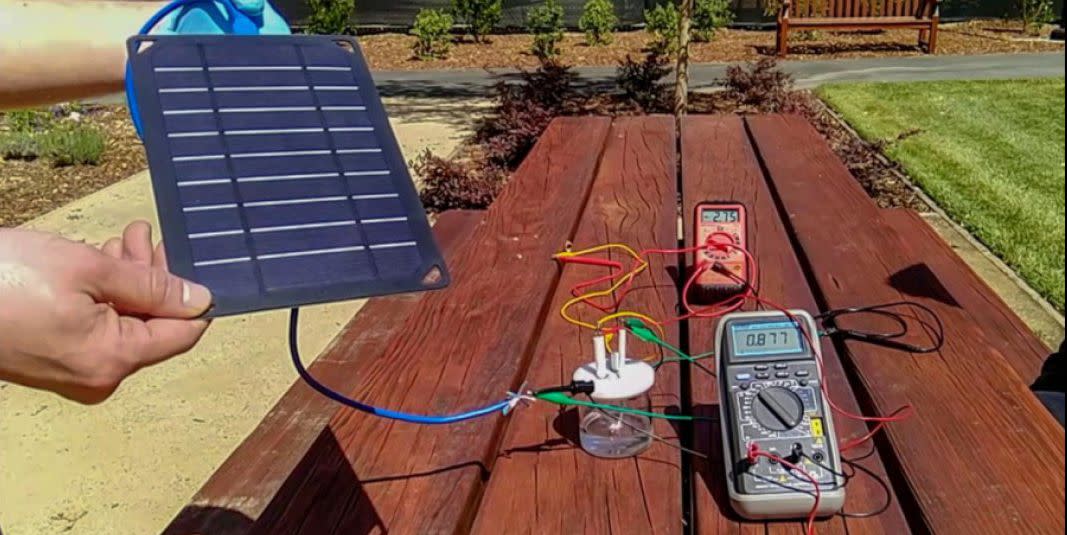Scientists Are Now Transforming Saltwater Into Hydrogen Fuel

Thanks to Stanford researchers, there might be a new recipe for hydrogen fuel: saltwater, electrodes and solar power. The researchers have developed a proof-of-concept for separating hydrogen and oxygen gas from seawater via electricity. It's far cheaper than the current methods, which rely on creating hydrogen fuel from purified water.
Breaking up a substance like water to create hydrogen and oxygen is called electrolysis and is a scientific technique centuries old. It was first codified by British scientific legend Michael Faraday, whose two laws of electrolysis from 1834 still guide scientists today. With a power source connecting to two water-based electrodes, scientists can get hydrogen bubbles to come out of an end called an cathode, while oxygen comes out of an end called an anode.
That works fine for fresh water, but saltwater is trickier because of its ability to corrode electrodes with chloride, which would limit a system's lifespan. The trick for Hongjie Dai, a professor of chemistry at Stanford, and his team was a change in materials.
If the anode was coated with negative charges, the scientists realized, those layers repel chloride and temper the rate of decay in the underlying metal. They created a nickel foam core, and on top of that layered nickel-iron hydroxide and then nickel sulfide. The foam core acts a conductor, and the nickel-iron hydroxide starts the electrolysis.
Without the negative charges, a system like this would run for only 12 hours. "The whole electrode falls apart into a crumble," says Michael Kenney, a graduate student in the Dai lab and co-lead author on the paper, speaking in a press statement. "But with this layer, it is able to go more than a thousand hours."
The normal freshwater system works just fine, but there's an outside problem: resources. "You need so much hydrogen it is not conceivable to use purified water," says Dai. "We barely have enough water for our current needs in California." The potential to use saltwater instead, as a source for fuel, is a promising one.
There's a simplicity in the design the team at the Dai lab settled on. "If we had a crystal ball three years ago, it would have been done in a month," Dai says. But the proof-of-concept offers tantalizing possibilities. If saltwater could be split into hydrogen and oxygen, then it could hypothetically be supplied to a deep-sea diving suit or a submarine and allow for unlimited dive time.
"One could just use these elements in existing electrolyzer systems and that could be pretty quick," Dai says. "It's not like starting from zero -- it's more like starting from 80 or 90 percent."
But for now, Dai and his team will stick with improving the proof-of-concept.
Source: Stanford University
('You Might Also Like',)

